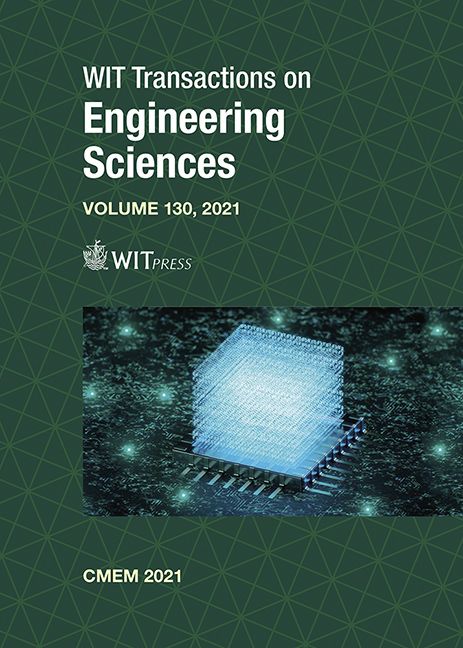DESIGN OF EXPERIMENTS PLATFORM FOR ONLINE SIMULATION MODEL VALIDATION AND PARAMETER UPDATING WITHIN DIGITAL TWINNING
Price
Free (open access)
Transaction
Volume
130
Pages
12
Page Range
3 - 14
Published
2021
Paper DOI
10.2495/CMEM210011
Copyright
Author(s)
MADHU SUDAN SAPKOTA, EDWARD APEH, MARK HADFIELD, ROBERT ADEY, JOHN BAYNHAM
Abstract
The process of developing a virtual replica of a physical asset usually involves using standardized parameter values to provide simulation of the physical asset. The parameters of the virtual replica are also continuously validated and updated over tune in response to the physical asset’s degradation and changing environmental conditions. The parametric calibration of the simulation models is usually made with trial-and-error using data obtained from manual survey readings of designated parts of the physical asset. Digital Twining (DT) has provided a means by which validating data from the physical asset can be obtauied in near real tune. However, the time-consuming process of calibrating the parameters so the simulation output of the virtual replica matches the data from physical asset persists. Tins is even more so when the calibration of the simulator is performed manually by analysing the data received from the physical System using expert knowledge. The manual process of applying domain knowledge to update the parameters is error prone due to incompleteness of the knowledge and inconsistency of the validation/calibration data. To address these shortcomings, an experimental platform implemented by integrating a simulator and a scientific software is proposed. The scientific software provides for the reading and visualisation of the simulation data, automation of the simulation running process and provide interface of the relevant validation and adaptive algorithmics. Tins comprehensive integrated platform provides an automated online model validation and adaptation environment. The proposed platform is demonstrated using BEASY - a simulator designed to predict protection provided by a cathodic protection (CP) System to an asset, with MATLAB as the scientific software. The developed setup facilitates the task of model validation and adaptation of the CP model by automating the process within a DT ecosystem.
Keywords
model adaptation, Digital Twin, cathodic protection, BEASY, software integration





